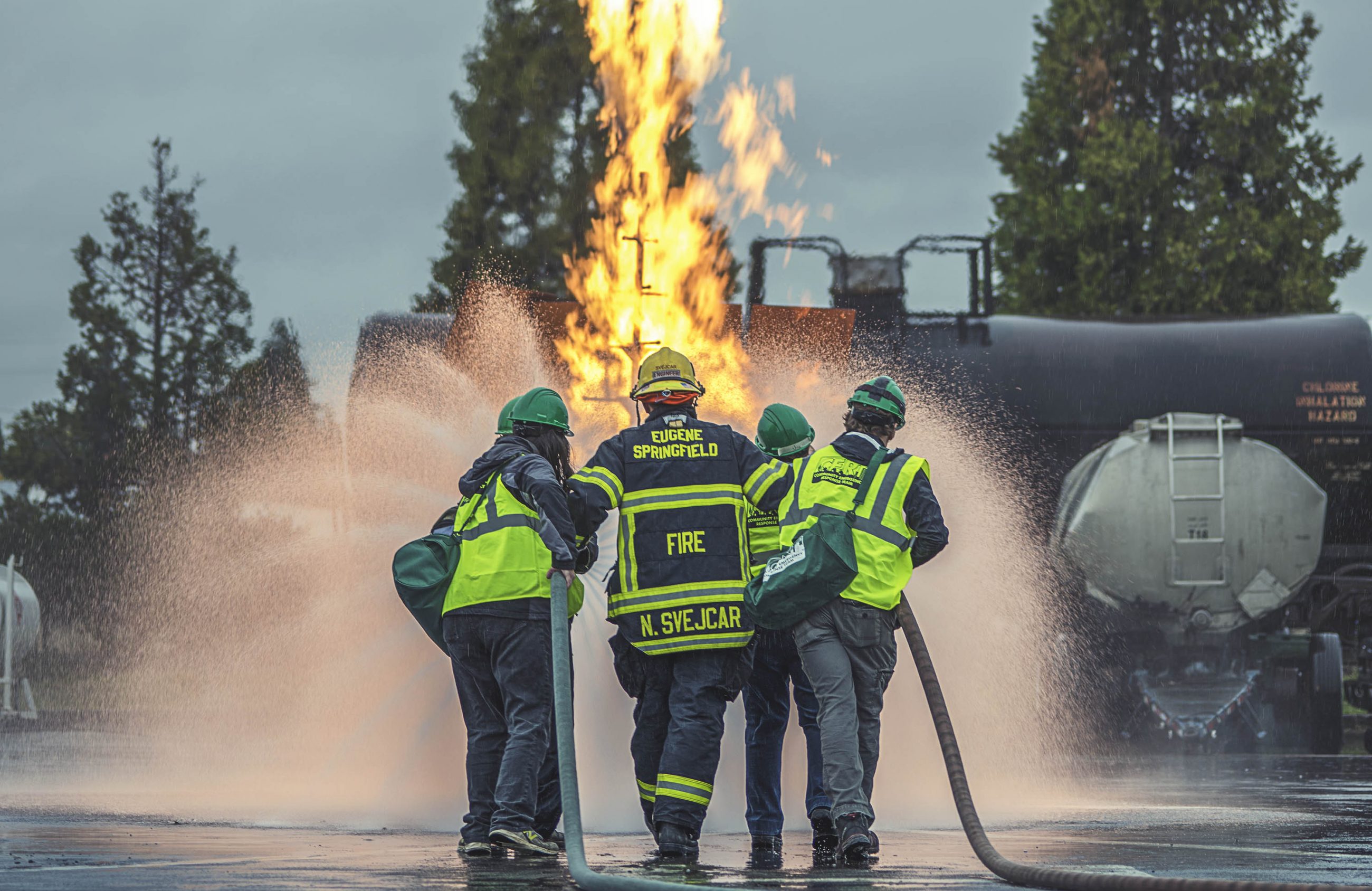Joining the Community Emergency Response Team (CERT) is a bit like going through the five stages of grief. You start, of course, with denial: There won’t be an earthquake in my lifetime!
And, if there is, it won’t actually be that bad.
And if it’s bad, I’ll probably just die and it’ll be fine (says the cynic).
But say you’re a realist and you want to survive the earthquake (or any other kind of disaster). In that case, you can train yourself to get ready by taking a free month-long CERT class provided by the city of Eugene.
Once you begin CERT, you’re confronted with the truth of the matter and enter stage two: panic. Unlike the stages of grief, where anger follows denial, in this stage you get sad, frightened and clammy at the same time.
I’ll try to instill the same feeling in you, if I may.
The Cascadia subduction zone is long overdue for an earthquake, and when it comes, it will be devastating. Seismologists give us a 1-in-3 chance of a 8.0 magnitude quake in the next 50 years, or 1-in-10 for a much bigger 9.0 quake. Earthquakes of that magnitude are serious anywhere — just look at the devastation caused by the 9.1 magnitude quake in Japan in 2011 — but they’ll be much worse in the woefully underprepared Pacific Northwest.
The earth will shake for about 5 or 6 minutes, causing liquefaction, landslides and ground failure.
Many homes will collapse or become unusable during the 8.0 or 9.0 quake, especially those built before 1974, when the first seismic building codes were introduced in Oregon. In my neighborhood, Fairmont, 74 percent of the homes were built before the 1970s, according to a 2011 analysis.
Very few neighborhoods in Eugene have underground power cables, making downed power lines a dramatic threat in the hours and days following the quake. Broken roads will be all but impassible for several weeks.
Emergency responders will be tied up dealing with major impacts at factories and large apartment complexes for several days, meaning most of us in the city will be entirely on our own for a while. Due to the likelihood of damage to I-5 and the high possibility of collapsed bridges across the Willamette River, we may not see outside support coming to Eugene for several weeks.
Joe Harwood, a spokesman for EWEB, says, “You need to have two or three gallons [of water] per person per day, and you need to store it, and you need to be ready to essentially survive on your own for at least a week, if not longer.”
In other words, we will need to depend on ourselves, and our neighbors, to survive.
Are you frightened yet?
I broke into a cold sweat on my way home from the first class.
But there is a path to safety, and CERT training can show you the way.
The Community Emergency Response Team is a division of the Federal Emergency Management Agency (FEMA), which means volunteers are integrated into the greater scheme of rescue operations through the city. Patence Winningham, senior program coordinator with city of Eugene’s emergency management department, says, “CERT is a volunteer population we could utilize to our advantage within the neighborhoods.”
During the winter storms of 2016-2017 which left thousands without power for extended periods of time, CERT volunteers — or CERTs — helped the community by recharging batteries in medical equipment for civilians without power.
“Those little incidents that we see help us test our abilities,” Winningham says.
Day One: Panic
CERT training takes about a month — I took two classes a week, each lasting three hours. When I entered the classroom, I found about 50 fellow community members of all ages.
The population of the CERT class skewed a bit older — middle-aged, probably with families — but my classmates appeared to be from ages 12 to 80. One young mother even brought her toddler along (the kid was adorable in a hard hat).
We split into groups and started getting to know each other while working through tabletop exercises and emergency simulations.
One young man in my group who works for the city wanted to add CERT to his résumé. Another was a retired nurse, and another a mother and therapist. Everyone had different skills to bring to the table.
The first day of CERT training focuses on what threats our community is likely to face, and the kind of supplies and plans we should make sure to have prepared. There is, of course, the deadly Cascadia subduction zone earthquake, but our community is also likely to face flooding, fires, landslides and yet more of those dangerous winter storms that can leave us isolated and without power.
By the end of class, I was sweating bullets. The trainers — including Brandon Noble, an experienced CERT, Dr. Geoff Simmons of the Red Cross, and emergency planners like Winningham — said in the event of the big quake we were likely to face weeks without outside help, months without power and up to two years without fully functioning medical facilities.
That realization came as a slap in the face: There’s a 37-percent chance of a major Cascadia earthquake in the next 50 years, and it could very well kill thousands. We’re likely to have refugees from the coast after the quake, Winningham says.
Enlarge
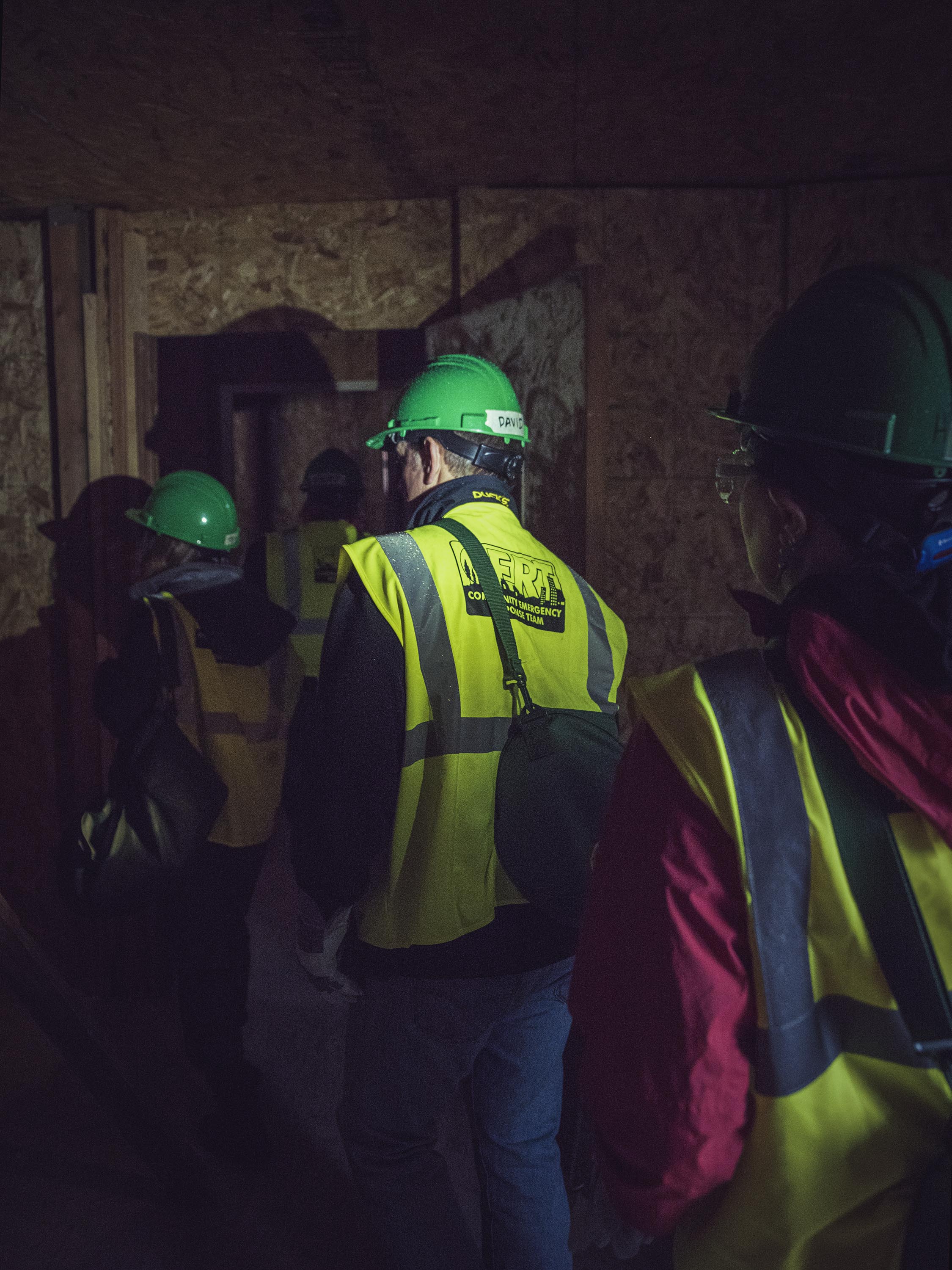
Photo by Rob and Tracy Sydor
“We are almost the second-largest city in the state,” she says. “And then you tie in all the other little rural communities and cities we have around, people are coming here to look for those resources.”
I realized I was totally unprepared. I would run out of water in a day.
I went to the store and soon had 35 gallons of water stockpiled — enough to last my household of two humans and a dog for a week. I live close to the river, so I also bought a water filter that can pump up clean water from unclean sources.
Stage three in accepting the possibility of disaster (much like grief’s bargaining stage) can get a bit expensive. This stage is personal preparation and self-preservation — marked by a shaky determination to save your own skin. I started hoarding cans of food and worked on growing my medical supply kit.
I found large storage containers at Costco in which to stockpile everything I could need — bleach to purify water (just a few drops and a half-hour wait makes it safe), hand sanitizer and sanitation wipes, shelf-stable foods, lighters.
As I became embroiled in worry over the coming Cascadia apocalypse, I started assessing threats in my own neighborhood. With only one door to leave my apartment, it became difficult to find alternative routes out. But with power lines strung up very close to my front door, I decided a window is a safer exit.
“Okay, so we’ll drop our stepladder out the window and one of us will jump out and set it up,” I planned with my partner, who also attended the class. “Then the other person hands the dog out the window and we both clamber out. Afterwards we can assess the house and turn off the gas line.”
I brought my camping gear indoors from our outdoor storage room located under the power lines. Having a tent and sleeping bags available post-earthquake is a must — our typical shelters could be too dangerous to stay in.
Safety Lessons
One CERT lesson led by Noble focused on how to determine the safety of a structure. CERTs are expected to identify — and stay out of — buildings that are threatening collapse, even if we hear citizens screaming for help inside.
Noble says an injured CERT goes from an asset to a patient, so personal safety is of the utmost importance.
I started feeling more confident in my ability to protect myself, and started worrying about my neighborhood. This outward concern is stage four in the earthquake acceptance process: Now that I’m ready, how can I get ready to help other people?
We learned about search-and-rescue tactics. Eugene Deputy Fire Chief Ray Brown has 222 firefighters in Eugene, and he expects most to respond to a nearby station in the case of an earthquake. That still means only one firefighter per 750 civilians in Eugene — they’ll probably be too busy to rescue my neighbors or me after a quake.
So I learned how to work with a team to rescue a victim trapped under concrete using a lever and blocks of wood. (This was followed by a trip to Home Depot to pick up the needed lumber and crowbars.)
I learned how to enter a space, assess threats and victims quickly and help people get out. My group in the class grew closer each week as we helped dummies out from under concrete and tried using fire extinguishers. We chatted about our families and gauged each other’s emergency preparations.
Enlarge
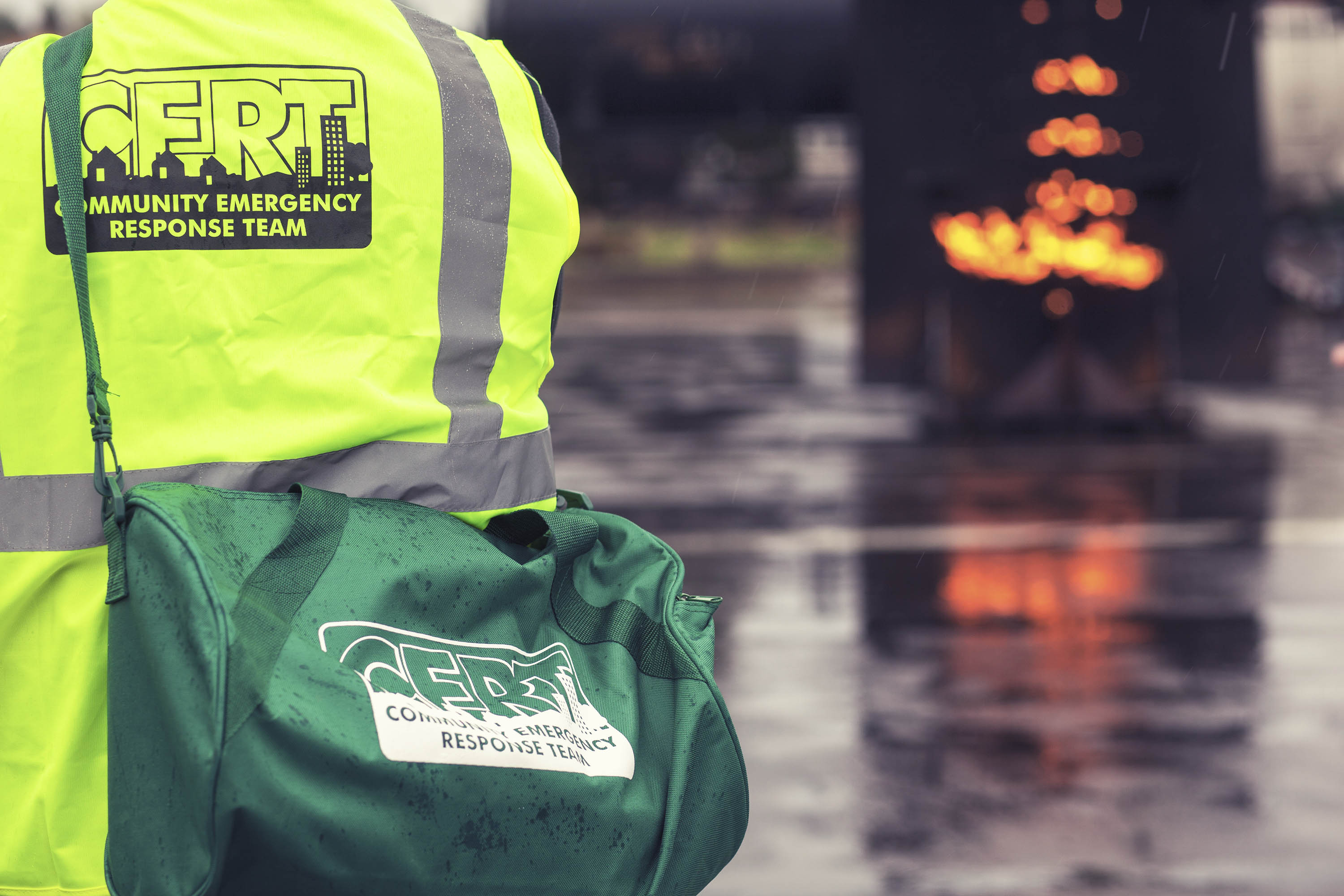
Photo by Rob and Tracy Sydor
We received free CERT bags filled with flashlights, bright neon vests, hard hats, tools, goggles and gloves. Once I had that bag, I started to feel like a first-responder instead of a victim. I finally felt like I could help not only myself but my neighbors as well.
Every lesson had me running to WinCo, Home Depot or the thrift store to find necessary supplies for my ever-growing kit.
Then came medical training with Simmons, the physician. I learned how to carry an injured victim, how to splint a broken bone and how to care for a bleeding injury. My group chuckled at our robotic movements once we were splinted with cardboard and plastic wrap.
We learned how to assess the symptoms of shock, check for a pulse and determine when someone is too close to death to attempt to treat and it’s time to move on to someone else.
Triage sounds horrifically callous, but when there’s an endless stream of victims, it’s necessary to help the worst off who are likely to survive with treatment first. A person with minor injuries is a low priority, and may even be enlisted to help treat worse-off patients.
My teammates varied in their physical abilities — some of our older members were unable to bend their knees to reach patients on the ground — but every CERT is valuable in a disaster, regardless of joint pain. Comforting victims and watching over children is just as important a role as search and rescue. Tracking numbers of victims to provide information to the city is vital as well.
Stage four of the emotional response to CERT also includes preparing your neighborhood, which creates a feeling of control over the uncontrollable. I figured out where I’d set up triage in my neighborhood — probably in a large empty lot between two houses.
Now to notify your neighbors: The Map Your Neighborhood program through the city is a useful tool to set up a plan with those around you and determine available resources. It helps you talk to your neighbors about resources and create an emergency plan for up to 30 households.
I’m Finally Ready
Though CERT is very useful, its status as a subdivision of FEMA also means there are a few strange and outdated quirks in the training.
“The terrorism unit has aged a little bit,” Winningham says. “We’re allowed to add stuff to it but we’re not allowed to take things away.”
In my class, a few of the younger and more anarchist-aligned class members were fairly put off by the framing of the terrorism unit. The unit took an entire day of our training, even though the primary lesson of it was “if there’s a terrorist attack, run the other way.”
Winningham and her crew work to update the material as much as allowable. Best medical practice has changed a bit since the CERT training materials were last updated in 2011, and Winningham says they’re changing the materials to reflect those best practices.
Regardless of its flaws, CERT left me with the sense that I’m ready for anything.
Stage five comes after the final assessment — a day of exercises in triage, medical care, search and rescue and fire suppression. Each successful exercise left us newly-minted CERTs feeling more prepared and even elated.
By the end of the day, I felt like I could take on an earthquake.
After a full month of classes, I finally felt prepared. I have accepted the possibility of disaster and am ready to take it on.
Enlarge
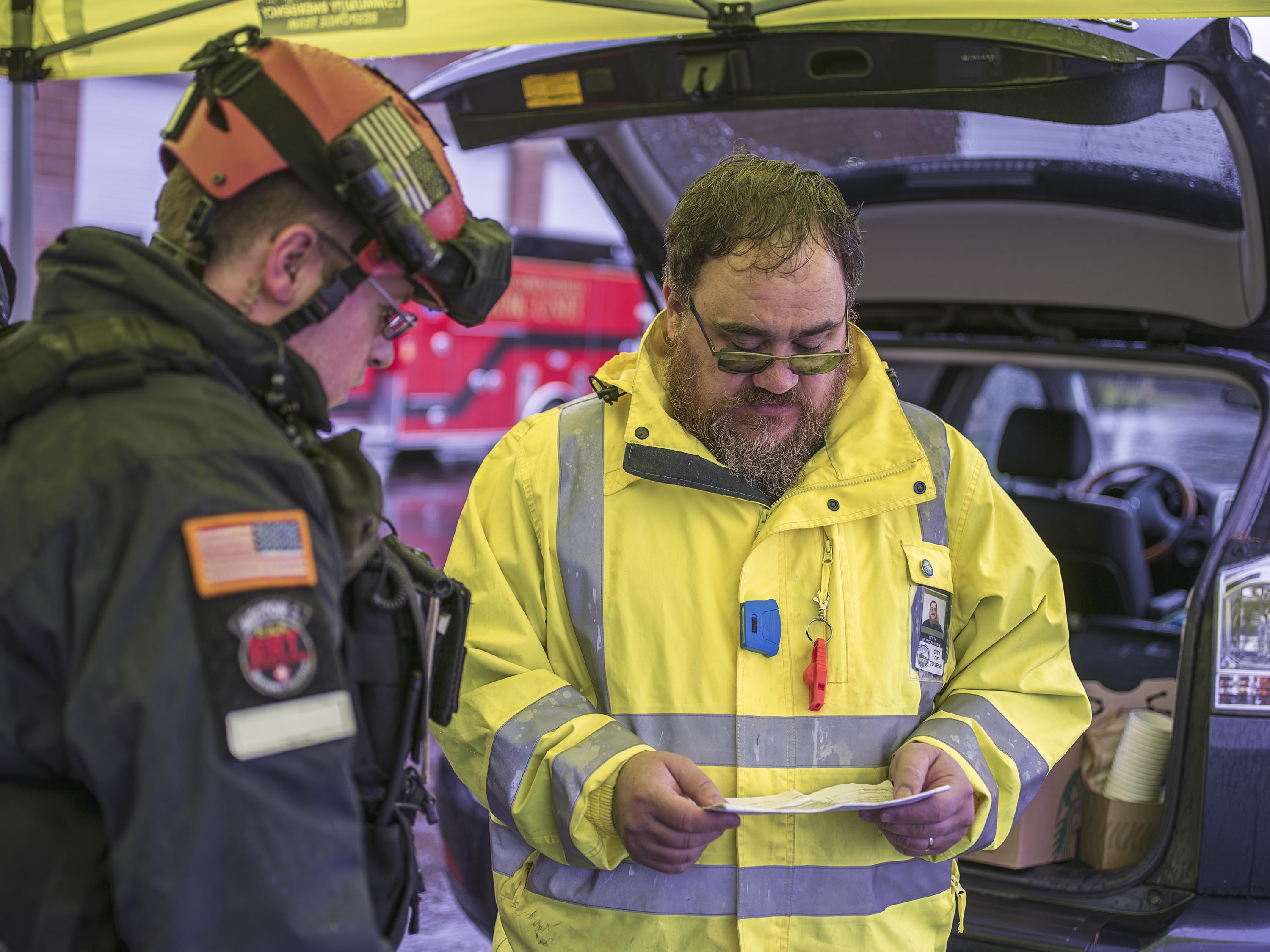
Photo by Rob and Tracy Sydor
That feeling of preparedness and ability to help will save my mental health in an emergency. I’ll know what to do next and won’t feel helpless. As Winningham says, “There are benefits to taking ownership of your own life and not having an expectation of somebody coming in to save it.”
Have I led you to panic? Take a deep breath. You can start getting yourself ready right now with a mental exercise.
Winningham says to take things one step at a time.
“Just go for the first two minutes,” she says. “If you’re at work, think about it.”
Where will you put your head during the emergency to protect it? Do you have good shoes to avoid broken glass? How will you leave the room if the obvious exit is blocked? What objects are likely to fall over and injure you — can you secure them to protect yourself?
Next, think about the first two hours after a disaster, Winningham says. “You’re at work? How are you going to get home? Where are my children? Where are my parents?” she says. “Ask yourself those questions, but start small so it’s not so overwhelming.”
You can set yourself up with minor emergency kits in good locations — your workplace, your car, your home. These kits should include good walking shoes, some spare food, water and clothing that would be appropriate for the weather of the season.
Cars in particular are perfect for a three-day kit — useful in case of earthquake or even if you get stuck in the mud while out hiking in the boonies.
You never regret preparing an emergency kit.
Then you can move on to longer-term preparations: Once you’re home, how do you check up on your family? Where will you all meet if there’s a disaster? Where do you set yourself up if your house is too dangerous to stay in? Where is your water supply?
Taking it a bit at a time can make it easier to cope and get ready. You can also get a three-month guide and shopping list from the city for preparing your family at eugene-or.gov/DocumentCenter/View/34437.
I’m constantly adding to my supply kit and trying to become better prepared. I still need to buy a second hard hat and a second fire extinguisher, but I’m making progress. Every step helps and keeps us CERTs ready: not just to help ourselves, but to help you, too.
The spring CERT class runs 9 am to 5 pm every Saturday from April 28 to May 19. To sign up for the class or for more information find the Eugene/Springfield CERT Facebook page or visit CERT’s new website at eugene-cert.com.
Enlarge
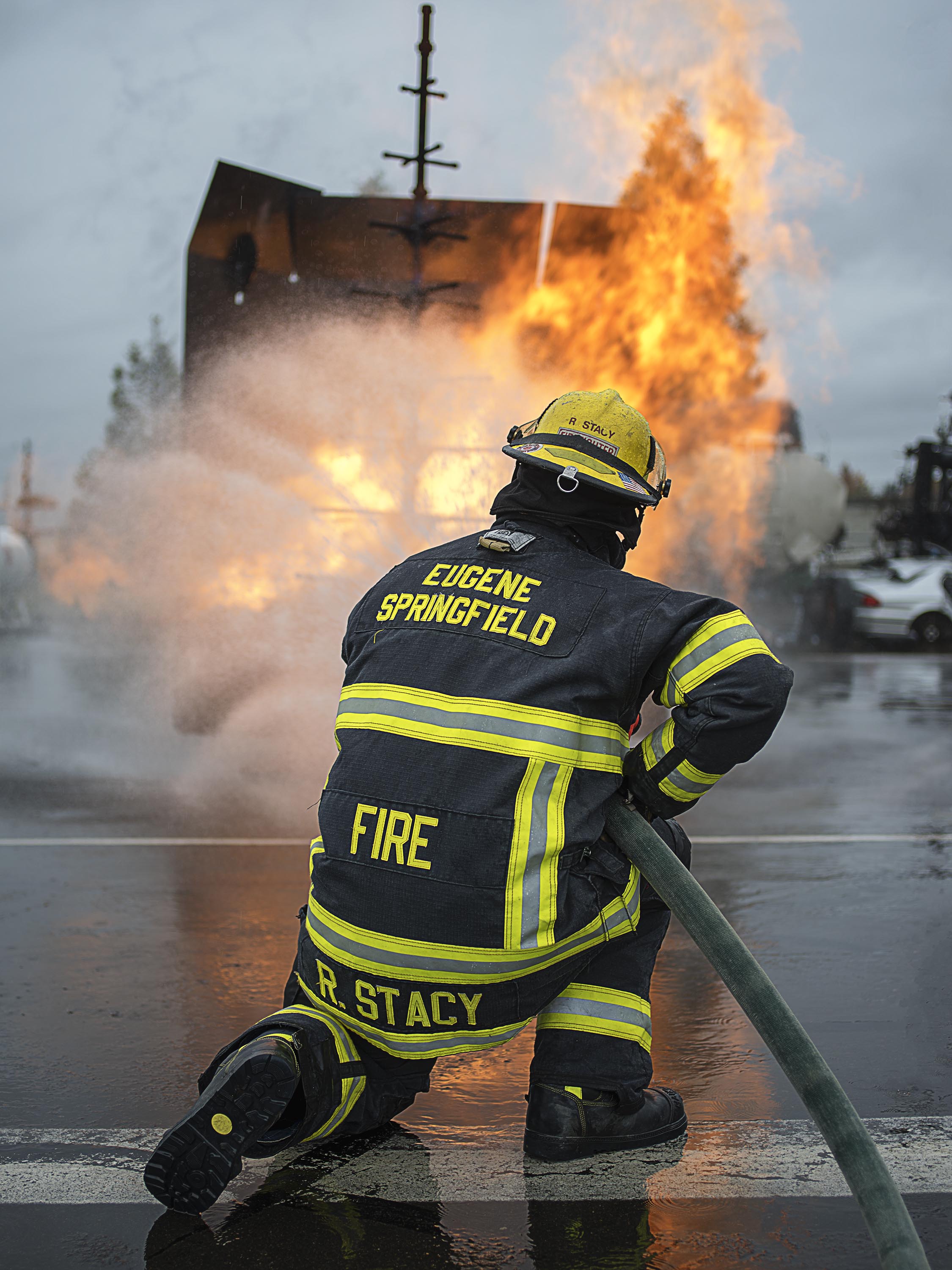
Photo by Rob and Tracy Sydor
____________________________________________
Water and Electricity
While preparing yourself for disaster, it’s helpful to know your power and water provider is getting ready too. EWEB isn’t completely ready for disaster right this moment, but EWEB General Manager Frank Lawson has made it a top priority.
A 2010 OSU study gave us a more accurate and frightening prediction regarding the Cascadia subduction zone: The likelihood of a magnitude 8.2 or higher quake is 37 percent — more likely and more dangerous than previously thought. That new discovery has left Oregon institutions scrambling to get ready.
After an earthquake, the entire Northwest power grid could be down. If that happens, Lawson says, “We’re going to disconnect. We’re going to isolate ourselves from the rest of the grid.” Why?
Because Eugene has its own generating resources thanks to the Seneca biomass power plant, the University of Oregon’s small power generation system, and a few dams up the McKenzie River (that are blessfully built into bedrock).
“We’re the only ones in the area that could bring back partial power if the northwest grid goes down,” Lawson says. “That’s part of our plan, but we’re not there yet -— there’s a lot of technical challenges to doing that.”
It starts with hardening connections from those generating sources to what EWEB calls “critical loads” — hospitals, care facilities, shelters and emergency services. “We’re calling it our resilient spine,” Lawson says.
And here’s a bit of advice that’s helpful at the EWEB scale and at the household scale: “We don’t know what the exact profile of this is going to look like, and in order to address anything like that you have to be really flexible,” Lawson says. “We have to build into our processes and our systems the ability to handle anything.”
EWEB is also planning to give neighborhoods the capacity to take care of themselves.
“We want to have distributed neighborhood emergency sites that will have drinking water and electrical capability,” Lawson says, “so you can walk down the streets to the local school or park or community center and it will be an identified emergency station.”
These stations will be powered by solar and get water from wells, making them off-the-grid and self-sufficient.
The first one is set to be built at Kalapuya High School in the Danebo neighborhood by the end of the year. “We’ve agreed to do at least five of those in five years, I wouldn’t be surprised that when we get into this we get into 10, 15, 50 of these things.” There are also mobile water treatment facilities, Lawson says, that “could dip into the Willamette River. It’s basically a filter plant on wheels.”
But just because EWEB is gearing up for disaster doesn’t mean you don’t have to. Lawson has his own extensive emergency kit and he hopes you do too. “It’s not about having a plan, it’s about being ready,” he says.
“It isn’t done by sitting down and writing a plan. It’s about executing the plan and training on the plan and really getting physically and emotionally ready for it.”
